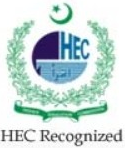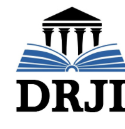Determinants of Rotavirus among diarrheal children (0-5yrs) attending some health facilities in Sokoto Town, Nigeria
DOI:
https://doi.org/10.63147/krjs.v3i1.32Abstract
This study was carried out to molecularly detect and characterize Rotaviruses from children attending selected hospitals in Sokoto State. A total of 350 stools were collected from diarrheic children under five years of age. Samples were analyzed for the presence of Group A rotavirus antigens using CUSABIO Human Rotavirus (RV Ag) ELISA kit. Result reveals that, children that were fed with breast milk and solid foods had the highest prevalence (39.6%) while children that were fed with solid food recorded only 15.1% prevalence. Chi-square analysis indicated statistical significant relationship between Rotavirus diarrhea and type of food fed, P<0.05 (0.0204). Major sources of water of the family of infected children is Tap water (54.75%) and well water (39.6%) respectively, while River and Pond water was 3.8% and 1.9%. respectively and there is statistical association between rotavirus diarrhea and source of water (p<0.05). Children that often had contact with animals have high prevalence (69.8%) than their counterparts (5.7%). Chi-square analysis indicated significant association of Rotavirus diarrhea and child’s contact with animals (P<0.05). The percentage positive was higher in children whose parents are civil servants (47.2%) and is lower in children of un employed parents (28.3%). Children whose parents had primary level of educations had the highest number of rotavirus disease. There is significant association between Rotavirus disease and type of food, source of water, contact with animals and level of education of the parents. Interventions including should be provided to safeguard public health against the Rotavirus.
References
Downloads
Published
Issue
Section
License
Copyright (c) 2024 Yusuf Sarkingobir

This work is licensed under a Creative Commons Attribution-NonCommercial 4.0 International License.
This work is licensed under CC BY-NC 4.0







